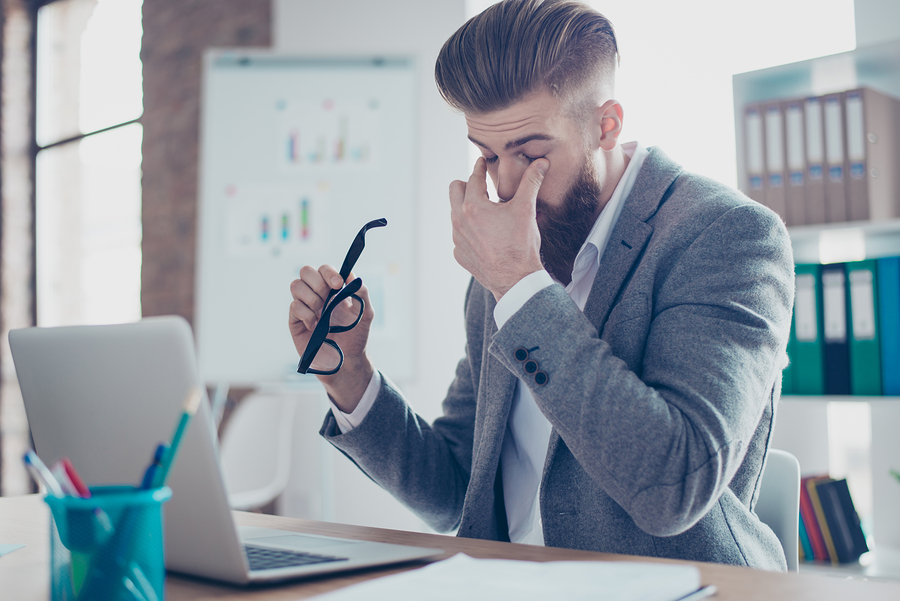- Make It Yourself Lavender Heart-Shaped Bath Bombs!
- 20 Things You Never Knew About “Down There”
- 12 Best Foods For Those Suffering From Arthritis Pain
- 12 Personal Hygiene Mistakes Almost Everyone Makes (Mom Never Told You About #4!)
- 15 Medicinal Plants And Herbs From The Cherokee People
- 12 Mind-Blowing Benefits Of Drinking Coconut Water During Pregnancy
- 12 Outstanding Winter Foods That Won’t Fatten You Up Like A Christmas Turkey
Protecting & Improving Your Eyesight: Technology Is Coming Up Here!
In today’s digital world, where the majority of people stare at a screen for an average of nine hours a day, one of the most important things to take care of is our eyesight. This might seem like a daunting task but there are a few things that you can do to take care of your eyes and still complete any work you might have in front of a screen (although cutting down on screen time is one of the best ways to protect your eyes).
While there are some older and tested methods for how to take care of your eyes and improve your eyesight, technology is also coming up with new ways to help our eyes. While this may seem contradictory, technology is advancing quickly in our day and there is always something new. Here are a few tried and true, and some new, technological, and just coming up ways to help your eyes and keep them healthy.
Continue to Page 2
Eating The Right Foods
Improving your eyesight happens from the inside as much as it happens from the outside. Eating good foods that help improve your eyesight with Vitamin E and Vitamin C as well as lutein is essential for eye health. If you’re eyes are feeling a little sore or you think that you’ve been losing your eyesight, try adding at least one of these foods to your daily diet. Last tip – try to eat most of these foods raw as cooking or baking will break down the vitamins in the foods.
Vitamin A is an essential part of keeping your eyes healthy and there are quite a few foods that contain vitamin A in large quantities. Red peppers, dark, leafy greens, orange-colored foods, winter squash, broccoli and Brussels sprouts are all foods that are high in Vitamin A. Vitamin A also needs zinc to deliver it to the eyes from the liver and foods like lean meats and poultry, beans, and eggs are high in zinc and will help your body be able to absorb the vitamin A in the areas where it needs it.
Eyes also need Vitamin C and many of the foods that contain Vitamin A also contain Vitamin C. Red bell peppers have the most vitamin C per calorie of a vegetable and other vegetables that contain vitamin C include broccoli and mustard greens. There are fruits with high amounts of vitamin C as well including oranges, kiwis and strawberries.
Vitamin E is another nutrient needed for our eyes and it can be found in sunflower seeds and almonds which contain almost half of the recommended daily value of Vitamin E. Dark leafy greens also contain lots of Vitamin E and it is also contained within broccoli and brussel sprouts. Lutein, another nutrient needed for our eyes, can be found in kale and squash.
Omega-3’s are also important to our eyes and deficiencies in this fatty acid has been linked to dry eyes. Omega-3’s are prevalent in almost all seafood including salmon, trout, tuna and other fatty fish. Omega-3’s also seem to be quite helpful in protecting our eyes from glaucoma and age-related macular degeneration.
Continue to Page 3
Doing The Right Things
There are a few things you can do to help protect your eyesight and improve it if you’re sitting in front of a screen all day. If you must look at a screen all day, make sure you’re sitting at least 20 to 26 inches away from the screen and are looking slightly down at it. Adjust the screen so that the top is slightly further away from you than the bottom is. Make sure to take breaks every 20 minutes as well, for at least 30 seconds at a time and, even if you don’t leave your seat, make sure to focus your eyes on something at least 20 feet away from you.
Sitting in front of a computer screen all day merits you taking these steps to protect your eyes in the long-term. This means making sure that your screen brightness is set to a reflective lighting scheme and finding the balance between brightness and contrast that is good for your eyes. Also, flat screen monitors are better for your eyes than old CRT screens since they emit less radiation that is harmful to your eyes.
There are also a few things you can do to help your eyes even if you don’t sit in front of a computer but are feeling like your eyes are not as healthy as they can be. Applying something warm to your eyes can help to lessen the stress on your eyes – applying a warm compress or simply rubbing your hands together to create heat and holding them over your eyes will do the trick. You can stretch the muscles of your eyes by rolling your eyes and massaging your temples. If you must, to relax your eyes take a mini-nap of 15 minutes or so – or at the very least sit with your eyes closed for a while.
Continue to Page 4
Technology Is Also Helping Your Eyes
Although it seems that more people are having eye issues due to the increased use of technology, researchers are also trying to use technology to help those with eye problems. Apps that scan your eyes and let you know if you have any issues are making their way onto the market and Digital Retinal Imaging machines are already being used to scan the retina and look at up to 85% of the retina, unlike traditional tests. There are also apps that help you read to put less strain on your eyes – these apps magnify the text on a phone screen or computer and light up the portion you are reading at the same time.
Conclusion
If you’re having trouble with your eyesight, it might be a good idea to start implementing some of the above mentioned tips for improving your eyesight. Eating the right foods to heal your eyes from the inside is just as important as changing your environment and helping to heal them from the outside. Technology is also changing to help those with eye problems see better and not have to strain the eyes. It as well helps diagnose if you think that you might have troubles with your eyesight. With all of the tips above, you’re sure to have some ways to help your eyes be healthy.



































